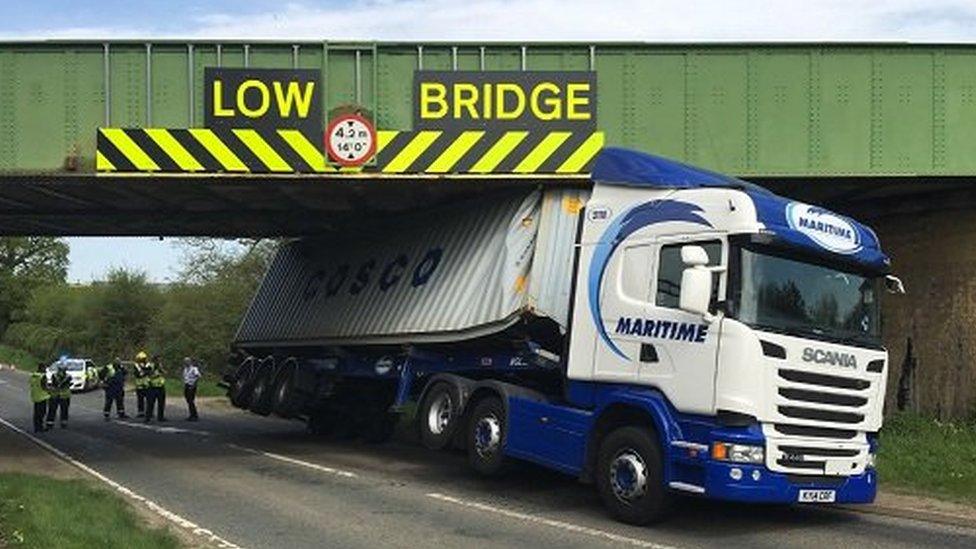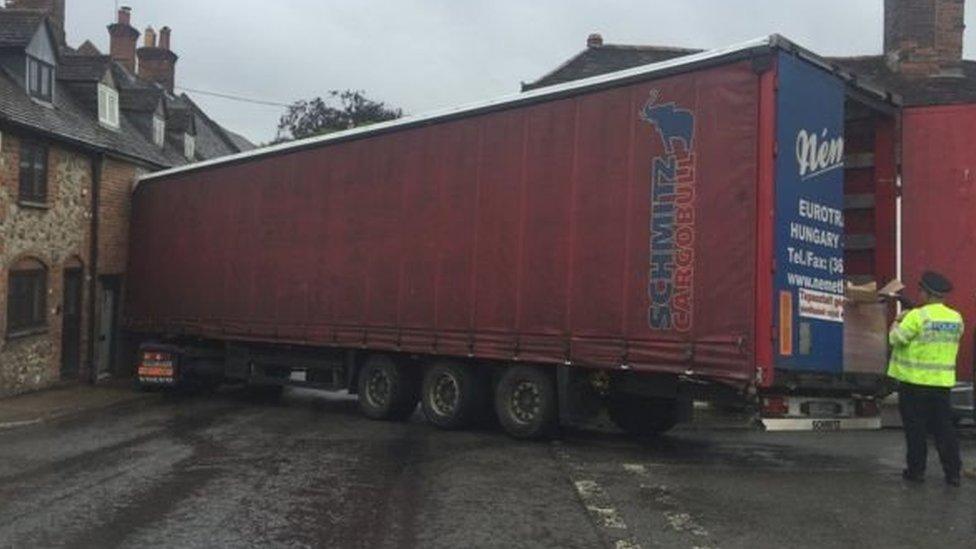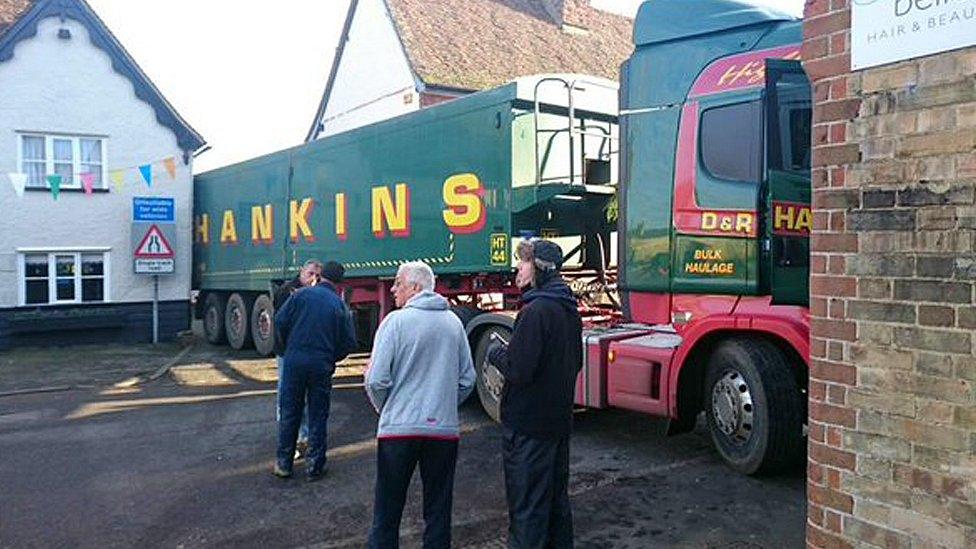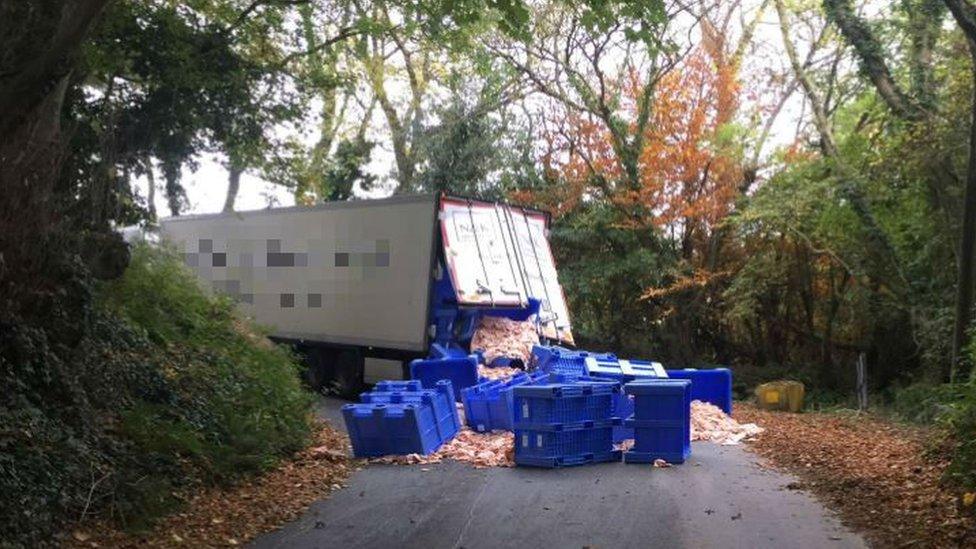Ban lorries from using car sat-navs, say councils
- Published

Last year, a lorry became trapped under a low railway bridge in Northamptonshire
Lorry drivers should be banned from using sat-navs specifically designed for cars, council chiefs have said.
The Local Government Association (LGA) wants legislation brought in to make sure lorry drivers in England and Wales use a GPS system suitable for HGVs.
It wants councils to have the power to ensure drivers avoid routes where they exceed the weight or height limit.
On Monday, a lorry crashed into a bridge near Birmingham, ripping the roof of its trailer off.
Calls to change navigation systems come after a number of lorries have got stuck in narrow roads or under low bridges.
In September last year a lorry was driven over a bridge in Marlow, Buckinghamshire, causing it to be closed for several months. It was more than 10 times over the bridge's weight limit.
Network Rail is asking drivers of high vehicles to heed "low bridge" warning signs after the same bridge in Hinckley, Leicestershire, was hit 11 times in 12 months.
Taking it 'seriously'
Commercial GPS systems designed for lorries include information on bridge heights and narrow roads.
They also allow lorry drivers to enter their vehicle dimensions to ensure they are instructed to follow a suitable route.
Police forces in Wales and Greater London already have the power to enforce weight and height restrictions on HGVs but councils are urging the government to roll this out across England.
Some councils have been working with freight and haulage companies to ensure drivers are using the most suitable routes.
The money raised from the new powers could be put towards fixing potholes, says the LGA.

This lorry caused three-mile tailbacks when it became wedged against a house in Marlborough in June 2016
LGA transport spokesman, Martin Tett, called upon the government to "start taking this issue more seriously".
Despite most lorry drivers being reputable, Mr Tett said some rural communities were "fed up" with the few who ignored the restrictions.
"It is common sense that all lorry drivers should use sat-navs designed for trucks, but this is only going to become a reality when it is a mandatory requirement. We are talking about a very small extra cost to drivers," he added.
An AA spokesman said it was down to the council to ensure that warning signs were clearly visible.
He said: "If a particular road has a particular problem then it is up to the local authority to come up with the signage to deal with that.
"And obviously if the lorry or any other road user contravenes that road order and that signage then they are open to a penalty."
- Published19 October 2016

- Published20 January 2016

- Published3 November 2016
